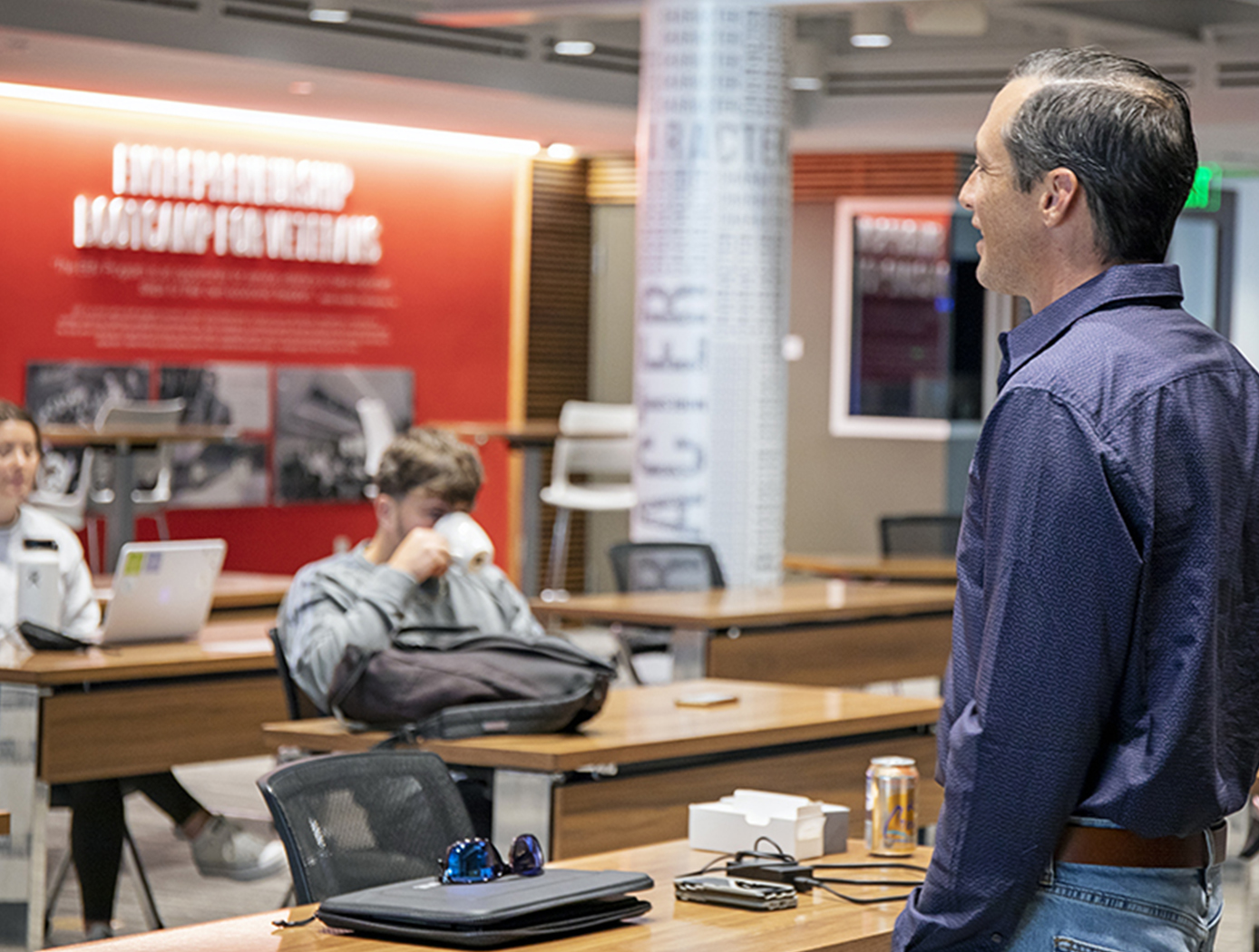
Most people think you need one of two things to start a business, a million dollars or a million-dollar idea. You don’t need to develop your own technology to start a tech-based venture. NASA’s Technology Transfer University (T2U) initiative introduces fledgling student entrepreneurs to NASA technology commercialization. What does that mean? Let’s take a step back for a moment and talk about what “NASA-developed technology” is.
Researchers, engineers, and scientists at NASA centers nationwide work tirelessly to devise novel solutions to challenges associated with living and working in space. The Technology Transfer Office works to bring NASA-developed technologies back down to Earth and infuse them into industries. The 1958 Space Act that created the agency, directed NASA to dedicate some of its resources to sharing the intellectual property it develops with the public.
In recent years, the NASA Technology Transfer program has found innovative ways to engage with students in higher education. NASA's Patent Portfolio can be integrated into just about any curriculum. Traditionally, it has found the strongest foothold in graduate-level business courses, but we have seen it successfully used in engineering courses, visual arts, communications, and interdisciplinary programs. In the business-focused execution, students work with technology throughout the semester to develop and identify potential use cases, business plans, and target markets for the technology.
One of the longest-standing T2U classes is at Rollins College in Winter Park, Florida. Dr. Pete McAlindon, Executive Director of the Center for Advanced Entrepreneurship at Rollins’ Crummer Graduate School of Business, has used the NASA patent in his master’s level business course for nearly a decade. In 2012 NASA proposed the idea of students looking at NASA technology to expose them to tech-based startups and garner new perspectives on the technology. Crummer assembled student teams to uncover specific commercial applications for the patented technology.
Nearly ten years later, McAlindon’s class has turned out several successful startups, one of which went on to have a major impact in the clean-tech industry. When asked about the impact and evolution of this activity, McAlindon said, “This has been so much fun, and the students love it. It is not your typical college experience; the students get to try things out in a controlled environment with the support of faculty and community advisors. The structure changes every semester; each team has a different dynamic, and the NASA patents are ever-changing.”
One of the reasons this course has been so successful is the professor's commitment to consistency while simultaneously understanding that a program like this needs to grow and change constantly. To hear about this experience firsthand, watch McAlindon’s presentation Technology Transfer University: Bringing NASA Technology into the Classroom on the NASA Technology Transfer YouTube channel.
Interdisciplinary T2U classes can merge entrepreneurial prowess and technical expertise, allowing students to build complementary teams. NASA T2U was recently introduced to a unique academic track at Florida State University (FSU), STEM Entrepreneurship. This program focuses on educating students on the most current concepts, methodologies, and industry practices of entrepreneurship. It also provides students with an overview of the foundations of the primary areas of Science, Technology, Engineering, and Mathematics (STEM) as viewed through an entrepreneurial lens.
The students in this program worked individually on different technologies to develop business plans and commercialization strategies for each. Several are interested in taking their ideas further, pitching in competitions, and eventually even starting a company."The timing could not have been better for us to start participating in this program,” said Jeff Whalen, STEM entrepreneur in residence. “In so many ways, the existence of NASA T2U validates the STEM Entrepreneurship program at Jim Moran College of Entrepreneurship and what FSU is doing with these forward-thinking activities.”
When the students do these business plan development projects, they learn how to adapt existing technology to fit a new concept and application. These notional business plans also give NASA fresh insights into how to frame the technologies to entrepreneurs and better communicate the benefits and use cases.
While this program is primarily an academic exercise, some students do take their business concepts beyond the classroom. In that case, they can leverage Startup NASA, an initiative that helps early-stage startups commercialize NASA technology via a no-cost non-exclusive startup license.
This instructor-led activity is most successful with an enthusiastic, committed instructor. Interested in learning more about NASA T2U? Visit our website or contact us directly at HQ-T2U@mail.nasa.gov.
View our webinar series featuring unique insights from educators leveraging NASA-developed technologies in their curriculum. An archive of these presentations is hosted on our YouTube channel.
Stay up to date, follow NASA's Technology Transfer Program on:




